Key takeaways:
- Animal rights emphasize the moral obligation to treat animals with respect, acknowledging their capacity for joy and suffering.
- Animal protection fosters a compassionate society and is intertwined with environmental sustainability and human health.
- Animal protection societies play a vital role in advocacy, education, and legislative efforts to ensure animal welfare.
- Personal stories and listening are crucial in advocating for animal rights, highlighting the need for resilience in the face of differing opinions.
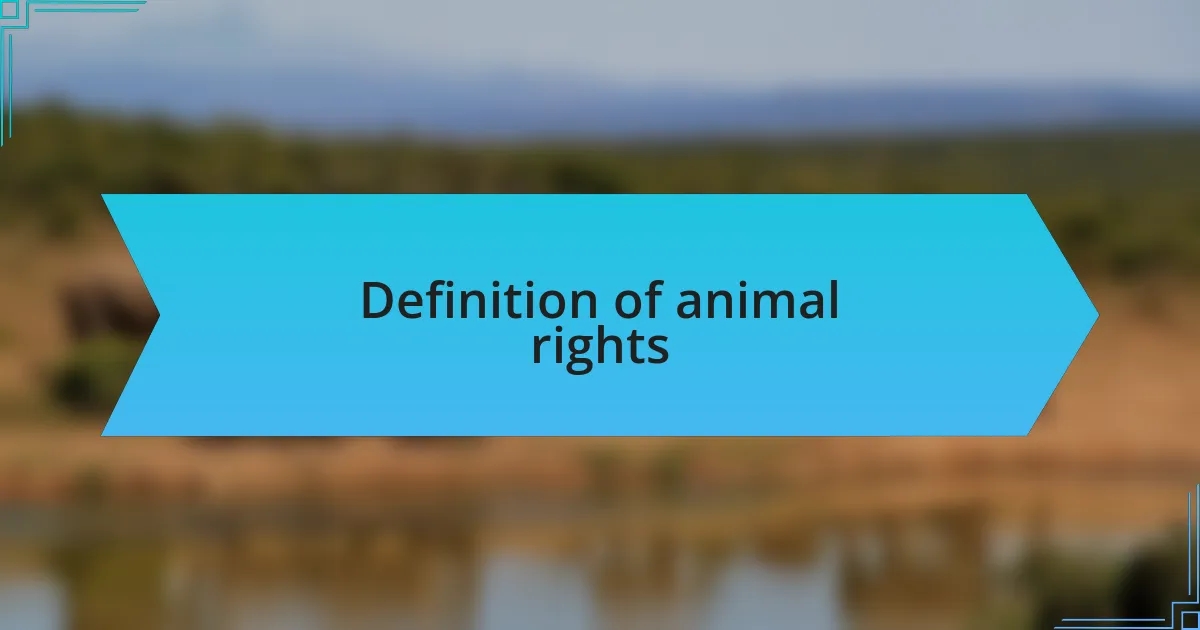
Definition of animal rights
Animal rights refer to the belief that animals deserve to live free from exploitation, suffering, and mistreatment. This perspective emphasizes that animals, like humans, have interests and rights that must be respected. It raises important questions about our moral obligations towards them—should we truly treat them as mere commodities, or should we acknowledge their intrinsic value?
Reflecting on my own journey, I remember a time when I rescued a stray dog. Watching her recover and thrive made me contemplate what it means to respect an animal’s right to live a happy and fulfilling life. This experience taught me that acknowledging animal rights isn’t just an ethical stance; it’s about recognizing their capacity for joy, pain, and companionship.
When we talk about animal rights, we are essentially discussing the rights to life, liberty, and bodily integrity for non-human beings. Isn’t it worth considering how far our responsibilities extend? Every time I hear a story of animals in captivity or suffering in factory farms, I can’t help but ponder if we are doing enough to honor their rights.
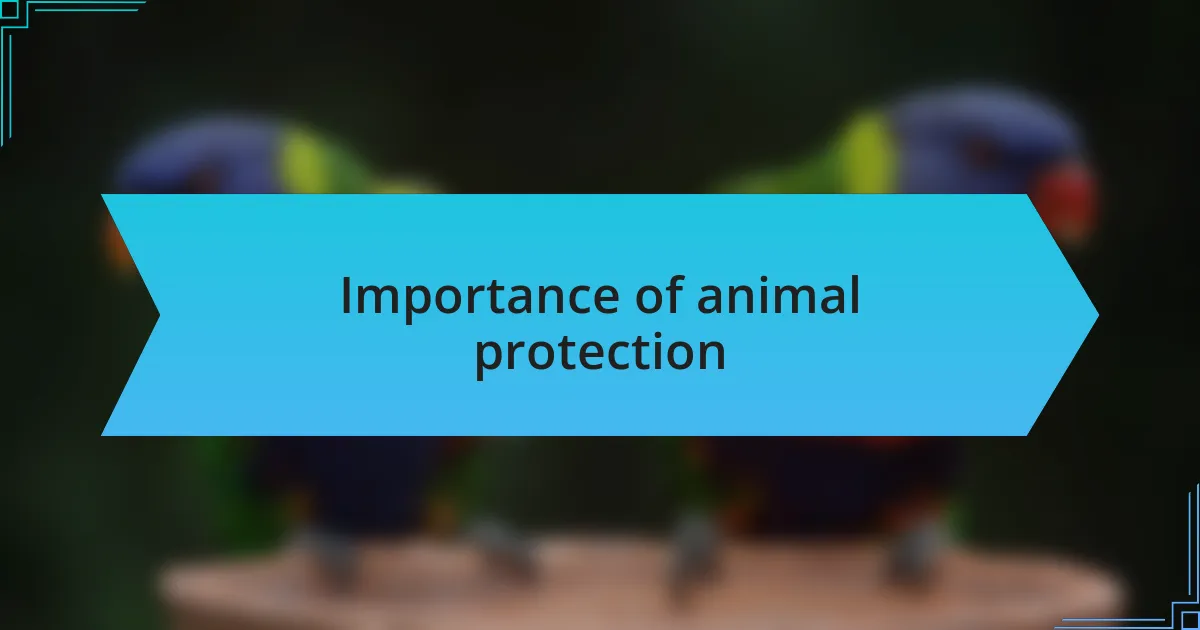
Importance of animal protection
The importance of animal protection cannot be overstated. When we protect animals, we affirm their right to live without fear or suffering, which in turn fosters a more compassionate society. I’ve often wondered, how can we claim to be humane if we allow others to endure pain merely because they cannot speak for themselves?
Consider the impact of cruelty on both animals and us; it creates a cycle of violence that reverberates throughout our communities. I once attended a workshop focused on the horrors of puppy mills, and it left me heartbroken. Seeing images of mistreated animals opened my eyes to the urgent need for advocacy. It’s a stark reminder that protecting animals is not only a moral issue but also a reflection of our values as a society.
Moreover, protecting animals can benefit the environment and human health. For instance, when we support sustainable farming practices, we help ensure that ecosystems thrive, which ultimately enhances our own quality of life. Isn’t it fascinating how intertwined our fates are? Each step toward animal protection is a step toward a healthier planet and a kinder world.

Role of animal protection societies
Animal protection societies serve as crucial advocates for those who cannot advocate for themselves. I recall volunteering at a local animal shelter and witnessing firsthand the dedication of these organizations. They tirelessly work to rescue animals from abusive situations, and their efforts often change lives in profound ways. How would you feel if you saw a creature transform from fear to trust, simply because of the care they received?
These societies also play an essential educational role, enlightening the public about the needs and rights of animals. I remember participating in a community event that included interactive workshops on humane treatment and animal welfare. It struck me how such initiatives can shift perceptions and inspire action in individuals who may not have previously considered the impact of their choices. Isn’t it empowering to know that knowledge can fuel change?
Importantly, these organizations often collaborate with policymakers to advocate for legislation that protects animals. I once sat in on a meeting where passionate advocates discussed potential laws aimed at curbing animal cruelty. It was invigorating to experience the collective determination to create a safer world for animals. Isn’t it remarkable how a united voice can lead to significant change in legal frameworks?
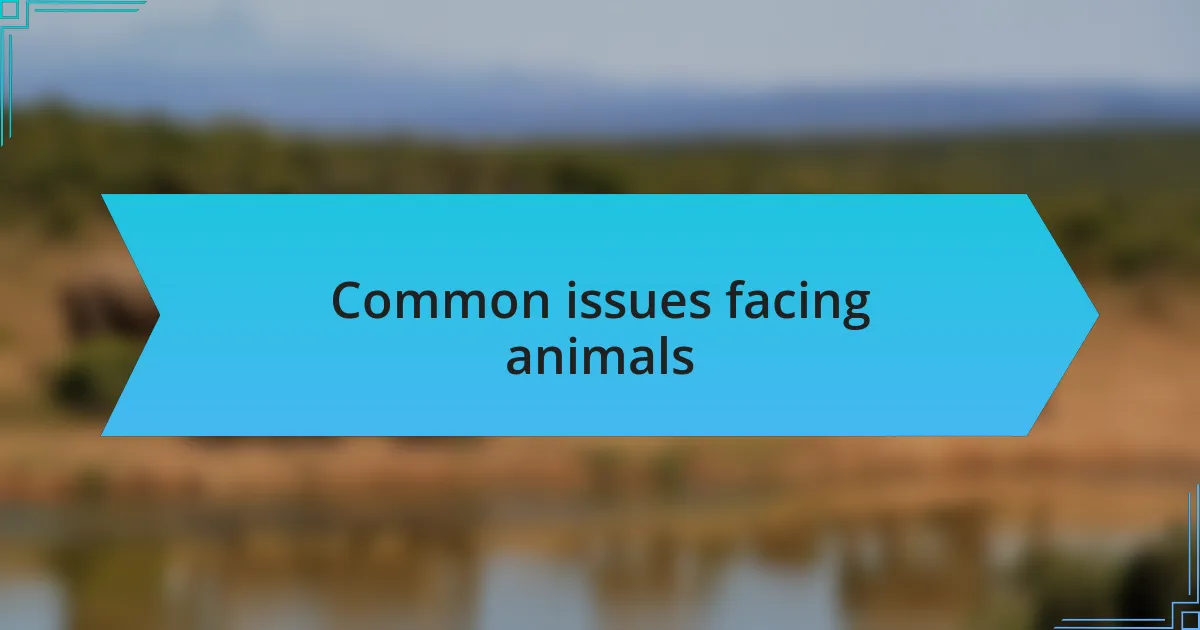
Common issues facing animals
One common issue facing animals today is habitat loss. I once visited a wildlife refuge and was struck by how many animals were displaced due to urban expansion. It left me pondering the question: what happens to these creatures when their homes disappear? The disruption of natural habitats not only threatens biodiversity but also interrupts the delicate balance of ecosystems.
Another significant concern is animal cruelty, which can manifest in various forms, from neglect to outright abuse. I will never forget a case I learned about, where a dog was found tied up and left without food or water. That moment made me realize that, unfortunately, not all animals have the protection they deserve. How can we continue to tolerate such suffering in our society?
Overpopulation is also a pressing issue that often leads to abandoned animals. I participated in a spay and neuter clinic once, and it was eye-opening to see the sheer number of pets in need of homes. This situation made me reflect on our responsibilities as pet owners; how can we ensure that every companion animal has a loving family? Addressing these common issues is essential for creating a better future for all animals.
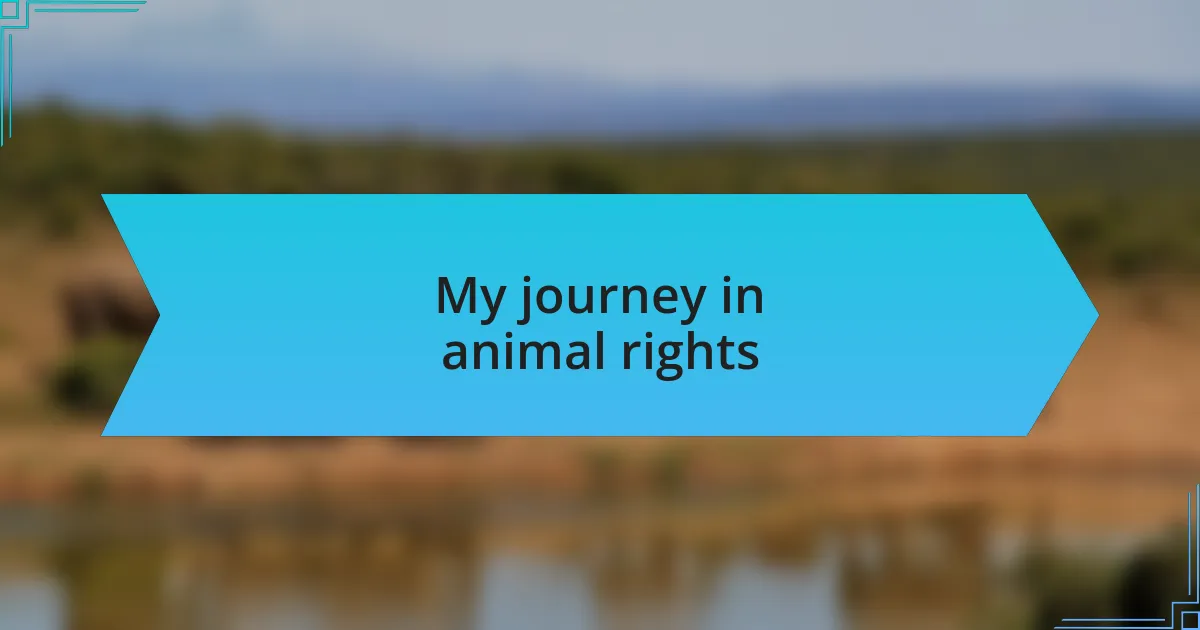
My journey in animal rights
My journey in animal rights began unexpectedly during a volunteering experience at a local shelter. I vividly remember the first time I held a timid, neglected cat, her frail body a stark reminder of the harsh realities many animals face. That moment ignited a fire within me — how could I turn a blind eye when so many rely on us for protection and love?
As I delved deeper into this cause, I attended numerous rallies and community meetings, listening to the stories of those advocating for change. One evening, I sat in a crowded room, feeling the palpable passion from fellow activists. Hearing a person share their transformation after rescuing an animal sparked a question for me: What drives someone to fight for those who cannot speak for themselves? It made me realize that our voices can create waves of change, amplifying the plight of countless animals who suffer in silence.
With each passing year, I found myself taking on more roles—advocating, educating, and fostering animals in need. I distinctively remember nurturing a litter of abandoned puppies, their tiny barks filling my home with warmth. I was left wondering, how many others have the power to connect deeply with these innocent beings? This experience solidified my belief that every small action contributes to a larger movement, reinforcing my commitment to animal rights.
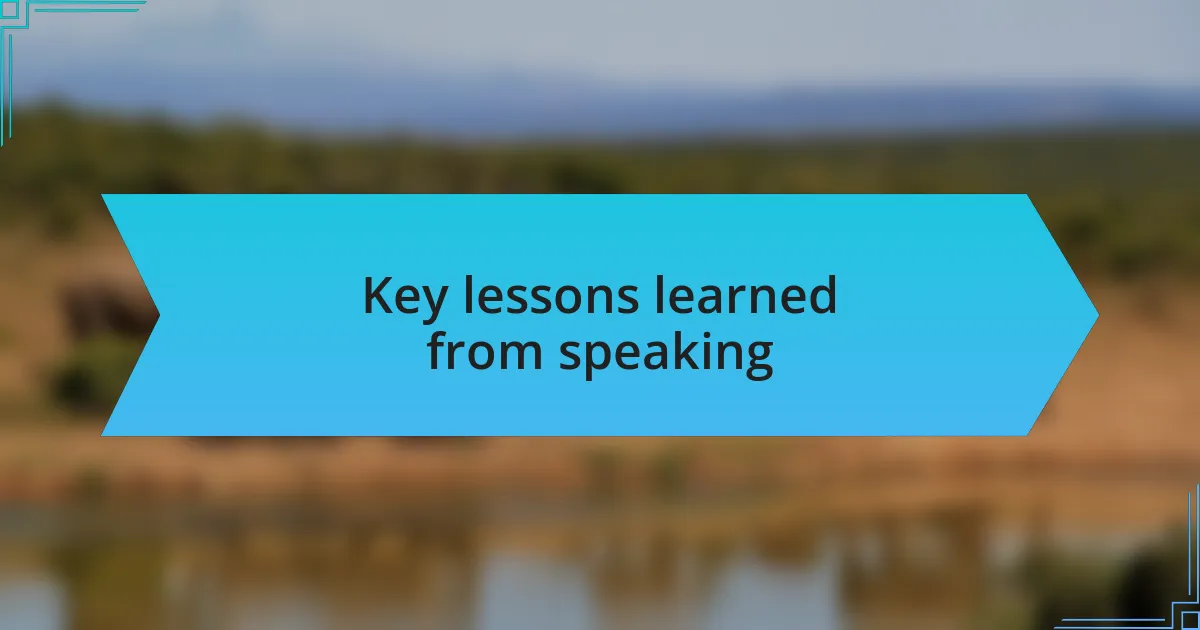
Key lessons learned from speaking
Speaking publicly about animal rights taught me the profound impact of storytelling. During one event, I shared my experience of fostering a senior dog who had been abandoned. The audience was visibly moved, and I could see the spark of empathy in their eyes. This reminded me that personal stories resonate deeply; they bridge the gap between emotional detachment and understanding.
Another critical lesson was the importance of listening. At a panel discussion, I attentively absorbed the powerful narratives of others advocating for various causes within animal rights. Their insights widened my perspective and I realized that effective communication involves not just sharing my voice but also valuing the voices of others. How can we advocate effectively if we don’t first listen and learn from each other?
Lastly, I discovered the necessity of remaining resilient. Speaking out often invited dissenting opinions, reminding me that not everyone would share my conviction. I recall a heated debate after one of my talks, where a participant questioned the need for animal advocacy. Rather than becoming defensive, I saw this as an opportunity for dialogue. It reinforced my belief that persistence and patience are essential in this journey. Each conversation can be a stepping stone toward greater understanding and compassion.